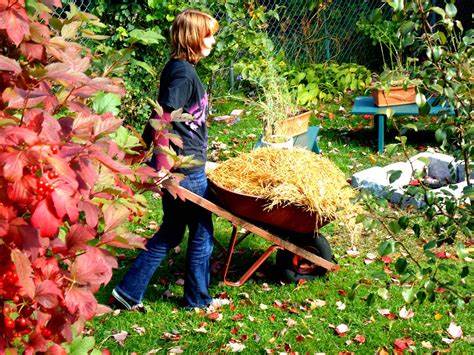
Before the arrival of snow, allocate a few minutes to complete these essential garden tasks to ensure your yard is well-prepared for the winter season. Winter is approaching rapidly, whether we’re prepared or not. For a considerable number of individuals, winter signifies the conclusion of outdoor gardening activities. Prior to concluding your gardening activities for the season, invest a brief period addressing some last-minute garden chores. These straightforward tasks do not require an extensive amount of time but will significantly enhance the gardening experience once the spring season finally arrives.
Marking Plant Locations
Now is the opportune moment to employ robust plant markers to indicate the positions of any new perennials, bulbs, or seeds that might slip your mind by the time spring arrives. There is nothing more exasperating than accidentally uprooting seedlings in spring, mistaking them for pesky weeds, or inadvertently planting something atop another plant. You don’t need anything elaborate—consider using a permanent marker on a paint stirrer stick, finished with a coat of clear gloss spray enamel. It doesn’t need to be aesthetically pleasing; it just needs to endure until spring.
Protecting Your Roses
For rose enthusiasts, safeguarding their roses is an inherent gardening task. However, if you are new to cultivating roses or have a particular rosebush you wish to preserve, dedicating a few minutes to this task is invaluable. Trim tall canes and shield the roses with straw or evergreen boughs to shield the plants from cold temperatures. If using rose cones, ensure they have ventilation. Alternatively, you can cover the roses with dry leaves and wrap them in hardware cloth or burlap. Prior to the coverage, clear away any diseased leaf debris and apply a fresh layer of mulch to your flower beds.
Lift Delicate Bulbs
Certain plants thrive outdoors during the summer but are susceptible to the harshness of winter. Examples of such plants include dahlias, gladioli, and tuberous begonias, depending on your geographical location. Lifting these plants typically involves careful excavation, thorough removal of excess soil, allowing the bulbs or tubers to air-dry, and meticulous storage in a cool, dry place for the winter (garages often prove to be suitable, but ensure protection against mice).
Clean and Maintain Your Tools
While it’s true that this garden task might exceed a five-minute timeframe, contingent on the number of tools you possess, the fall season is the opportune moment to ensure their proper maintenance. At the very least, give all your tools a thorough rinse with a garden hose to eliminate any surplus dirt and allow them to dry completely before storing them, thereby preventing rust.
Embrace the Leaves
This final task is the quickest, yet it requires a considerable amount of willpower. For many of us, we were raised with the belief that we must tidy up our yards in the fall, clearing away all the fallen leaves. However, the truth is that removing all the leaves might do more harm than good. Numerous organisms overwinter within that leaf litter, including butterfly larvae and chrysalises. The leaves naturally decompose in your garden beds due to winter weather, enriching the soil with valuable organic matter. Moreover, the leaves offer shelter and warmth to wildflowers and other plants growing beneath. Simplify your fall routine—consider leaving at least some of the leaves undisturbed.